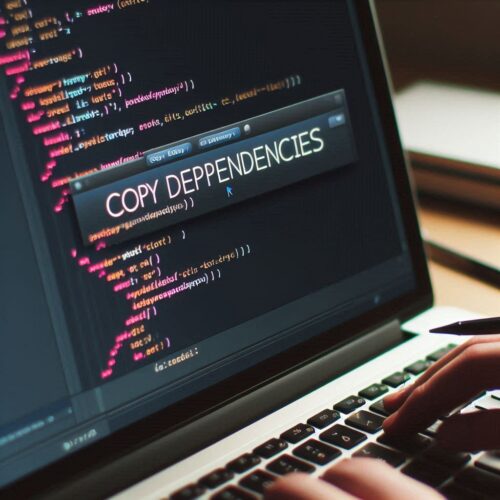Solution 1: Using maven-dependency-plugin in the pom.xml
This solution adds a profile in pom.xml to copy dependencies during a specific build phase, such as install or package. You can customize the profile ID and phase according to your requirements.
Example configuration:
<project>
...
<profiles>
<profile>
<id>qa</id>
<build>
<plugins>
<plugin>
<artifactId>maven-dependency-plugin</artifactId>
<executions>
<execution>
<phase>install</phase> <!-- Specify the build phase, e.g., install -->
<goals>
<goal>copy-dependencies</goal>
</goals>
<configuration>
<outputDirectory>${project.build.directory}/lib</outputDirectory>
</configuration>
</execution>
</executions>
</plugin>
</plugins>
</build>
</profile>
</profiles>
</project>Solution 2: Direct Plugin Configuration in the Build Section
If you want this to run every time without specifying a profile, place the maven-dependency-plugin directly in the build/plugins section with the prepare-package phase.
Example configuration:
<project>
...
<build>
<plugins>
<plugin>
<artifactId>maven-dependency-plugin</artifactId>
<executions>
<execution>
<phase>prepare-package</phase>
<goals>
<goal>copy-dependencies</goal>
</goals>
<configuration>
<outputDirectory>${project.build.directory}/lib</outputDirectory>
</configuration>
</execution>
</executions>
</plugin>
</plugins>
</build>
</project>Command to run:
mvn clean packageThis approach automatically copies dependencies during the package phase.
Solution 3: Command-Line Execution Without pom.xml Changes
For a one-off dependency copy without modifying pom.xml, use the command below to copy dependencies to the target/lib folder directly from the command line.
Command to run:
mvn clean package dependency:copy-dependencies -DoutputDirectory=${project.build.directory}/libThis command is useful if you only occasionally need to copy dependencies.
Solution 4: Creating an Uber JAR with Dependencies Included
If you want a single JAR file that includes both your code and all dependencies, use the maven-assembly-plugin with the jar-with-dependencies descriptor.
Example configuration:
<project>
...
<build>
<plugins>
<plugin>
<artifactId>maven-assembly-plugin</artifactId>
<executions>
<execution>
<id>make-assembly</id>
<phase>package</phase>
<goals>
<goal>single</goal>
</goals>
<configuration>
<descriptors>
<descriptor>jar-with-dependencies</descriptor>
</descriptors>
</configuration>
</execution>
</executions>
</plugin>
</plugins>
</build>
</project>Command to run:
mvn clean packageThis will generate an “uber” JAR that includes all dependencies within target as projectname-jar-with-dependencies.jar.
Solution 5: WAR or EAR Packaging for Web Applications
If you’re building a web application and need dependencies in a WAR or EAR file, Maven can bundle dependencies automatically:
- Set
<packaging>war</packaging>or<packaging>ear</packaging>in yourpom.xml. - Run the standard Maven
packagegoal.
Maven will place dependencies in the appropriate directories inside the WAR or EAR file based on the structure expected by your application server.
Command to run:
mvn clean packageSummary Table
| Scenario | Solution |
|---|---|
| Copy dependencies to a custom location permanently | Solution 1 or Solution 2 |
| One-time dependency copy | Solution 3 |
| Bundle dependencies in a single JAR file | Solution 4 |
| Package dependencies in a WAR or EAR file for deployment | Solution 5 |
These methods provide flexibility based on your project’s packaging needs and build requirements.


